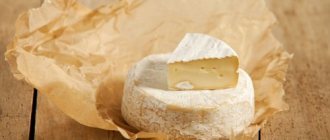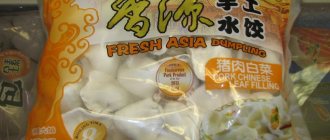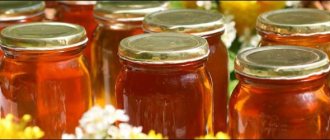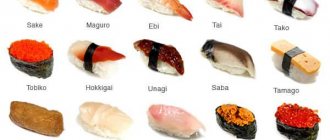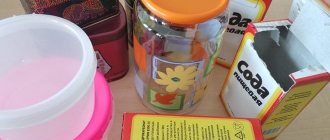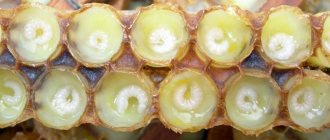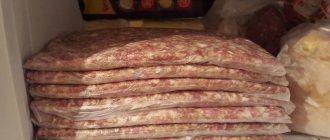Deadlines
| View Dear readers! To solve your problem right now, get a free consultation — contact the lawyer on duty in the online chat on the right or call: +7 (499) 938 6124 — Moscow and region. | Time frame (months) | ||||
| Glass | Plastic | Fridge | Freezer | Room temperature | |
| Natural | 8-12 | 8-12 | 8-12 | — | 6-10 |
| In the honeycomb | 120 | — | 120 | — | 120 |
| Propolis | 84 | — | 84 | — | 84 |
Mandatory conditions of detention
It should be immediately clarified that natural bee nectar is a rather capricious product. In order for it to retain not only its taste, but also its beneficial qualities, special storage conditions should be created for it (Figure 2).
Buckwheat, flower or any other variety will remain useful only if you follow these recommendations:
- Container: storage containers should only be glass. You can buy the product in a large plastic container, but after that it is advisable to pour it into separate small jars. The containers should be small, since constantly opening the jar leads to the penetration of bacteria into the container, which means the shelf life of the nectar is reduced.
- Lighting: It is advisable to limit the access of light to containers with nectar. To do this, you can use either dark glassware, or initially place the containers in a dark and dry basement or cellar.
- Temperature: in order for the bee product to retain its beneficial properties, it is important to observe the temperature regime for its storage. It should be within +8+15 degrees. But it is much more important to prevent sudden temperature changes, which can cause condensation to form in the container and the product to deteriorate.
In addition, it is advisable to store the product separately from food with a strong odor, since honey quickly absorbs foreign aromas.
Figure 2. The product is stored in small glass containers away from sunlight
As a storage container, you can use not only glass, but also enamel, ceramic or wooden dishes. The only exception is barrels made of softwood. This material contains special resins that can spoil the smell of nectar. In an oak barrel, the product may slightly change color and darken, but this will not affect its taste and beneficial properties. Artificial nectar does not have such strict storage rules, but since it does not contain any useful substances, it is better not to buy it in the first place.
Do honey and honeycombs have an expiration date?
According to the law, it can be stored for 8 to 12 months. However, this only applies to the product that is pumped out of the honeycomb and poured into industrial packaging.
The specific period is set by the manufacturer. In honeycombs it can retain its properties for years, since they are securely sealed and protect against the penetration of microorganisms.
Even after pumping, natural honey that is properly stored will remain fresh for much longer than a year. It should be borne in mind that after 12 months vitamins and beneficial microelements will begin to disappear, so it is still better to consume it fresh.
Several factors influence shelf life:
- variety;
- chemical composition. A large amount of honeydew - a sweet substance collected by bees - shortens the storage period;
- bees' diet. If a beekeeper constantly feeds them sugar, the result is unhealthy and quickly turns sour;
- maturity. Unscrupulous producers pump out honey before it is fully ripe, which provokes fermentation. This will be indicated by the foam formed on the surface and the sour taste.
IMPORTANT! Properly maintained mature honey will retain its nutrients and freshness for at least 2 years.
There are known facts of using honey as a preservative to preserve perishable foods for a long time. Therefore, theoretically this period is unlimited. But industrial production and the desire of unscrupulous entrepreneurs to make a quick profit do not allow us to talk about a modern product in this way.
GOST
Although natural honey has no expiration date and lasts for many years, there are proper methods that will preserve its quality and delay crystallization. They have been studied, described and standardized. The main Russian standards for production, marketing, shelf life and storage conditions of natural products are described in GOSTs:
- R 52834-2007
- R 54644-2011
- 19792-2017
Today, the shelf life of honey according to GOST is normally up to 2 years, and in ideal conditions – from 8 months to infinity.
Storage rules
Proper storage has a significant impact on shelf life. First you need to decide on the container. The best option is aluminum, stainless steel. Glass, clay, enamel or ceramic containers are also suitable. Plastic must be abandoned, as its microparticles gradually make the contents toxic, this happens within a year. An iron container is also not suitable: it will oxidize and ruin the product.
The most important nuance is that the container must be hermetically sealed to prevent the penetration of microorganisms, as well as foreign odors.
In addition, the ambient temperature matters. It should be 6...20 °C. A refrigerator is ideal for storage, preferably with a freeze-dry function. Room heat promotes rapid loss of beneficial properties and fermentation.
The humidity in the room should not exceed 75%, and it is advisable to protect the place from light and heat sources.
How not to store
The following conditions significantly reduce shelf life:
- temperature above 20 °C;
- exposure to direct sunlight;
- humid air more than 75%;
- unsealed packaging.
Opening the package triggers negative processes and leads to a gradual decrease in beneficial properties.
Each of these factors leads to fermentation and spoilage of the product. Therefore, before purchasing, it is important to inquire about storage conditions.
Crystallization
Crystallization is a natural process of changing a liquid state to a solid state. It has nothing to do with the expiration date.
Moreover, timely crystallization indicates that the honey is natural, does not contain impurities and is not diluted. With the exception of certain varieties, for example acacia, which crystallizes for about a year, natural must be candied in 3 months.
The speed of this process is influenced by the type of grass from which the bees collected nectar, as well as the storage temperature. The refrigerator speeds it up; room temperature, on the contrary, slows it down.
Honey: a product that does not spoil?
I think you have heard more than once that honey is the only product that does not have an expiration date. On the one hand, this is true, because honey itself has a number of unique properties. On the other hand, honey is a product that cannot be stored forever, because if it hits the supermarket counter, it means it has already had contact with the external environment.
History knows a case when honey, according to researchers, stayed in a hermetically sealed container for more than 4 thousand years, and at the same time did not lose its healing properties.
It happened in Egypt, when a vessel with honey was found in one of the pyramids next to the burial, which was apparently 4 to 5 thousand years old.
Previously, honey served as a kind of “bribe” to the guards of the other world, where the soul of the deceased pharaoh or the top of the government was sent.
When the vessel was opened and they realized that it contained honey, they began to carefully examine it. As it turned out, it was not only suitable for consumption, but also contained a full range of useful substances.
This fact is, of course, impressive, and suggests that honey has no expiration date, but this is not the case.
Firstly, let’s not forget that honey in those days was exclusively natural, which means the absence of impurities, sugar and other substances could have a positive effect on its suitability. Secondly, honey, while in the pyramid, was stored under ideal conditions - in a dark, dry and not hot place. Together, these factors could indeed extend the shelf life of honey, but we cannot call it a non-perishable product.
Although it is worth remembering that honey is not only a storehouse of vitamins and nutrients, but also an excellent natural preservative that can not only extend the shelf life of other products, but also remain fresh and healthy on its own.
However, we see an expiration date on every jar we buy, which means it exists, and we should know how long it lasts.
The beneficial properties of honey cannot be overestimated
Signs of corruption
A spoiled or fermented product can be identified by its organoleptic properties:
- foam on the surface;
- sour taste.
Once the process is started, honey becomes useless and can cause negative consequences for the body.
Poor quality
You can recognize a low-quality product visually or using several methods:
- When transfusing, drops and splashes are observed. A high-quality one folds into a mound that slowly spreads out.
- A kilogram of undiluted product is placed in a 0.8 liter container; a liter jar will weigh about 1.5 kg. Other ratios indicate dilution with water.
- Turbidity, opacity.
- Sediment.
- Foam.
- Presence of sour taste.
- When rubbed between fingers it rolls off.
- Faint smell.
- Harvested more than a few months ago, it has not been candied.
- If you pour it over a piece of bread and let it sit for a few minutes, it should harden. If it softens, it means it consists of syrup.
- You can dilute a spoonful of honey in a glass of water: this will reveal the presence of impurities.
Poisonous
Poisonous is a product for the production of which bees collected nectar from plants dangerous to humans. It is toxic and can lead to unpredictable health consequences.
When consumed, it causes symptoms similar to intoxication: nausea, dizziness and even convulsions. It is impossible to detect it visually; laboratory tests are required. Therefore, you need to take the product seriously and purchase from trusted manufacturers.
What is the best way to store it?
Glass
This material is considered one of the most ideal, since at the chemical level it does not interact with honey, and therefore harmful compounds do not enter the bee treat.
The disadvantage of such a container is that it is absolutely transparent, which means it is not able to protect the product from the sun.
Tree
Such containers are no longer used for storage.
- It is necessary that the container be made of birch, linden or beech.
- It is better not to take containers made from coniferous wood, as they contain essential oils that can adjust the taste and aroma of honey, and usually not for the better.
Clay
For many centuries, honey was stored in a clay container, which is considered the best for this task. Its main advantages:
- Honey always maintains its temperature, even with sharp fluctuations in indoor temperature.
- Clay dishes do not allow moisture to enter the product.
- Clay completely extinguishes sunlight.
Some cons:
- In the modern world, it is extremely difficult to find good quality clay dishes.
- Clay is considered quite fragile, so it is not the most practical container for bee nectar.
Plastic
In stores, honey is mainly sold in plastic containers. This is extremely practical, plastic is inexpensive, and most importantly, transporting honey is very convenient. The main thing is not to keep honey in a plastic container for a long time, pour the honey into a glass jar.
Metal
Experienced beekeepers argue that storage in metal containers is unacceptable, as the shelf life of honey is significantly reduced. If you need to transport a large volume of honey, then you can transport the product in metal cans. An important point is to make sure that the metal does not contain lead, zinc and other harmful compounds.
Honey comb
One of the most interesting issues is storing honey in honeycombs. The basic rules for storing honey in this form are: absence of moisture, sunlight and temperature changes.
Place the honeycombs in a glass container: cut them into pieces and place them tightly inside the container. If you follow the above recommendations, honey will remain healthy, liquid and tasty for 2-3 years.
Is it possible to use expired
It is strictly prohibited to use expired food. After a set period, vitamins and nutrients disappear, and the fermentation process begins.
In addition, if we are talking about plastic containers, then the material has already released toxic particles into the contents, and the product has become dangerous. May cause poisoning, as well as systemic malfunctions of internal organs.
However, there is a way to partially revive honey. If fermentation has just begun, you need to completely remove the foam from the surface and put it in a water bath to warm up.
IMPORTANT! The temperature should not be higher than 37 °C.
It takes 40 minutes to warm up. During this time, pathogenic microorganisms will be destroyed and the storage period will be extended. However, it is better not to eat it, but to use it for cosmetic masks, massages, and going to the bathhouse.
How to determine freshness in a store or at home?
To determine the freshness of a product, first of all, you should pay attention to the appearance of the container. If it is a product from a store, then there is an expiration date on the label. For a natural product and a store-bought product with poor storage procedures, the following is typical:
- fermentation bubbles;
- mold film;
- foreign odor;
- sour taste.
Fresh honey has the following characteristics:
- nice smell;
- taste that matches the bouquet;
- thick and viscous, consistency or crystallized (buckwheat and acacia do not crystallize);
- homogeneous.
Liquid honey does not exist in nature in autumn and winter. Therefore, if you want to buy liquid honey, you should know that it has been melted. If you do this at high temperatures, then honey will lose its healing properties, but if it is done gradually at 30-45 degrees, it will retain it. It is safest to purchase only thick honey.
Defects: what can happen to honey during long-term storage
Over time, the consumer properties of honey deteriorate. The main defects of honey are:
- High humidity;
- Fermentation;
- Foaming: occurs during prolonged stirring, due to filtration defects, as well as repeated transfusion of honey with a high content of protein substances. Manifests itself in the form of abundant small air bubbles located on the surface or throughout the entire volume;
- A loose white layer appears on the surface of honey with a high glucose content;
- Foreign odors arise due to the absorption of substances from strong-smelling products. May be associated with the treatment of hives with formic, oxalic acids, naphthalene, phenotisian and other substances;
- Darkening of honey occurs during long-term storage: in room conditions (20–25°C), high temperatures (over 60°C) or in aluminum containers.
Why does honey separate during storage? Honey consists mainly of glucose, fructose and sucrose, which have different densities. If honey remains in a liquid state for a long time, it separates into these fractions. In a liquid state, honey stays longer at a higher temperature.
Stratification of honey during storage occurs for a number of the following reasons:
- Immature honey when collected early;
- Improper storage - violation of temperature conditions;
- Regrading - mixing different varieties;
- Adding impurities;
- Overheating of the product;
- Natural processes;
- Falsification.
Buying honey: how to correctly recognize and choose natural honey
Determining the quality of honey
The most important thing is buying honey! Always check the seller's documents. You must be sure that you are purchasing a natural product. To determine the naturalness and quality of honey, it must be subjected to examination. The quality of honey must be confirmed by certificates. An accurate examination can only be performed by experienced specialists from the relevant laboratories, but there are tests that can be carried out at home and even on the market. Pay attention to its external characteristics:
- color: honey can be transparent and colorless (clover and acacia), light amber (linden), amber (sunflower), dark amber (buckwheat), dark (honeydew);
- consistency: freshly pumped honey has a liquid, slightly viscous consistency; after about 1-2 months it begins to crystallize. Honey comes in solid (stone) form. Liquid honey should be both tender and homogeneous. Natural honey is quickly absorbed into the skin. The adulterated product is rough and may have hard lumps;
- taste: sweet, slightly tart, but pleasant, causes slight irritation of the oral mucosa;
- aroma: good-quality honey has a pleasant, unique floral aroma, which can be enhanced by slightly heating the product in a water bath.
How to spot a fake
Now let's figure out how to distinguish real honey from counterfeit honey. When buying loose honey, you can be guided by the following taste and external characteristics:
- Liquid honey cannot be cloudy. Sometimes they sell fake liquid honey, passing it off as acacia honey.
- Shrunken – may have stratification and inhomogeneity.
- Honey that tastes like caramel is not worth buying; it probably has added flavorings or was overheated.
- The taste and color must correspond to a certain type of honey. The taste of high-quality honey is tart, with a specific honey aroma, and not irritating sweetness. There will be no foreign solid particles or sediment left on the tongue. A slight burning sensation in the throat will also indicate the high quality of honey.
- It is difficult to identify fake honey by color; the palette is too diverse. Do not forget that the chemical industry does not stand still. Along with flavorings, a huge amount of food coloring is produced.
- Sugar honey can be identified by its very white color. The dark brown color suggests honeydew honey. If the color is dark and the aroma is weak and resembles the taste of caramel, then it is molten honey.
- It is easy to determine the ripeness of honey by its viscosity: The consistency of mature honey should be thick, but not too thick;
- Ripened honey, like a ribbon, is wound and layered on a spoon;
- Unripe, with a high water content - it will quickly drain from a spoon. Adulterated honey pulls out from a spoon in thin threads, whereas in flower honey the threads break off at a certain point.
Maturity
Only mature honey is beneficial . Ripe honey contains no more than 20% water, it crystallizes evenly and densely. The ripeness of honey can be determined even when purchased at the market: if you twirl a spoon in honey and then lift it above the container, the mature honey will curl onto the spoon, and the unripe one will cough out.
Ripe honey under favorable conditions retains its natural qualities for a long time.
Unripe honey contains excess moisture. Nectar with a high proportion of moisture cannot be stored for a long time:
- Unripe honey is produced by pumping out unsealed or incompletely sealed honeycomb frames.
- Does not have many beneficial properties of mature honey.
- It exfoliates to form 2 layers of different consistency, thick and candied below, and liquid and syrupy on top.
- It will ferment or sour in a short time.
Note: Honey can be prevented from souring by heating it to a temperature of 63 °C for 30 minutes. After this, it is suitable for the production of confectionery and drinks. You can prevent souring of honey by pasteurization; the greatest effect is achieved by pasteurization for 5-10 minutes at 78 °C.
Humidity and odors
Honey perfectly absorbs moisture from the environment. If you do not close a jar of honey tightly and leave it near a damp place, the mass fraction of water in the product will increase and, as a result, the amount of useful substances will decrease. In addition to moisture, honey perfectly absorbs odors, so it should not be stored next to strong-smelling foods (fish, onions, vinegar, sweet carbonated drinks, etc.), as well as household chemicals.
Important to remember! Margarita Bukina, board member of the Moscow Beekeepers Society:
“If honey has been stored correctly, it can be used for more than two years, although the healing properties of this product decrease with each subsequent year. To this day, ancient honey is found in Egyptian tombs, which is suitable for consumption. But if any of the rules are violated (the packaging was not tightly closed, heated, exposed to sunlight, etc.), honey can be stored for no more than eight months.”
